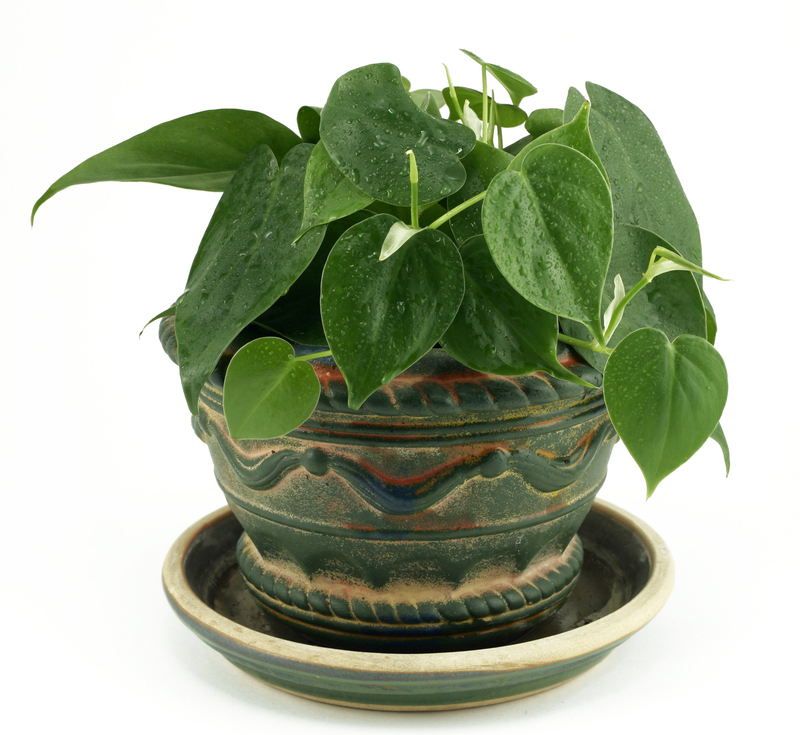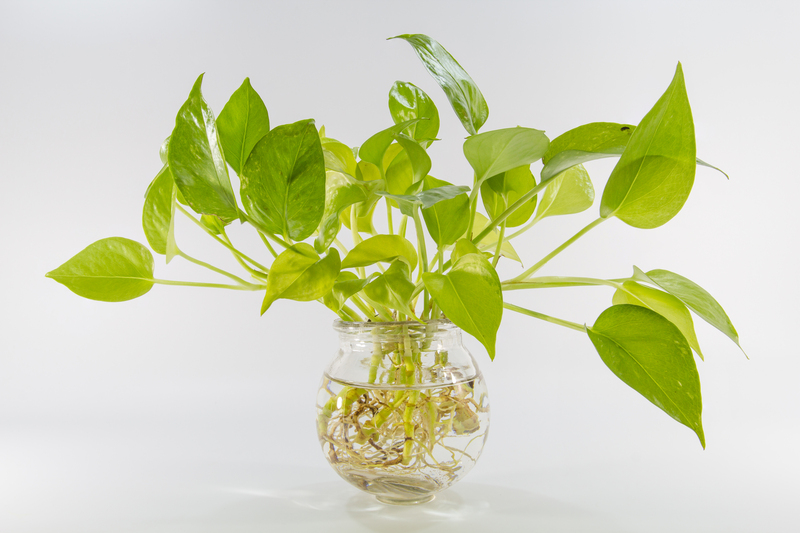How to Keep Your Garden Alive Through the Winter
Posted on 02/06/2025
How to Keep Your Garden Alive Through the Winter
For gardening enthusiasts, winter can feel like the end of the growing season. However, with the right techniques, preparation and care, you can keep your garden alive through the winter and ensure your plants thrive come spring. Whether you have a vegetable garden, perennial beds, or a collection of potted plants, this comprehensive guide will provide actionable strategies for protecting your garden when the mercury drops.

Understanding Your Winter Garden's Needs
The key to surviving winter in any garden is understanding what your plants require in colder months. Different species have unique cold tolerances and might require distinct care. Winterizing your garden is about minimizing cold stress, preventing root damage, and discouraging pests and diseases that thrive in dormant seasons.
Why Do Gardens Struggle in Winter?
- Low Temperatures: Frost can damage leaves, stems, and roots, especially in tender plants.
- Reduced Light: Short days can stress plants reliant on sunlight for photosynthesis.
- Dry Winds: Winter winds strip moisture from both soil and foliage.
- Water Logging: Excess precipitation may freeze, causing root rot or suffocation.
By understanding these winter challenges, you can apply the most effective winter garden survival strategies for your landscape.
Protecting Perennials and Shrubs Through Winter
Mulching: The Winter Blanket
Mulch is vital for protecting garden beds in winter. It locks in soil moisture, stabilizes temperatures, and shields roots from freeze-thaw cycles.
- Apply a 2-4 inch layer of organic mulch like straw, chopped leaves, or wood chips after the first hard freeze.
- Avoid piling mulch directly against plant stems to prevent rot.
- For roses and delicate perennials, mound mulch higher for extra insulation.
Water Wisely Before the First Frost
Well-hydrated plants are far better equipped to weather the cold. Before winter sets in:
- Give garden beds a deep watering if autumn has been dry.
- Watering is crucial for evergreens, as they continue to lose moisture through their leaves or needles during dormant months.
Wrapping and Covering Plants
Some perennials and shrubs benefit from physical protection:
- Wrap burlap around evergreens or tender shrubs to prevent windburn and moisture loss.
- Use stakes and burlap to create windbreaks for especially exposed areas.
- For small or container plants, cover them with frost cloths or reusable garden blankets when exceptionally cold nights are forecast.
How to Keep Your Vegetable Garden Alive in Winter
Choosing Cold-Hardy Vegetables
Keeping winter vegetables alive starts with planting the right crops. Some vegetables thrive in cool or even freezing temperatures:
- Kale
- Spinach
- Brussels sprouts
- Carrots
- Turnips
- Cabbage
- Leeks
These crops often grow sweeter after a frost, making them perfect for winter harvesting.
Using Cold Frames and Row Covers
To keep your garden crops alive during winter, invest in simple season extenders:
- Cold Frames: These are bottomless boxes with a transparent lid that act like mini greenhouses. Place over garden beds to trap heat.
- Row Covers: Lightweight fabrics draped over hoops protect vegetables from frost and maintain a warmer microclimate.
Cold frames and covers can extend your harvest by weeks--sometimes even months!
Raised Beds and Improved Drainage
Winterizing your vegetable garden also means making sure roots don't sit in soggy soil. Raised beds drain better and heat up faster in spring, offering a head start once temperatures rise. Be sure to replenish organic matter in autumn to nourish soil life through winter.
Gardening in Containers: Keeping Potted Plants Alive Through Winter
Protecting Roots from Freezing
Roots in pots are much more vulnerable to freezing than those in garden beds. To keep container gardens alive in winter:
- Cluster pots together for mutual insulation and move them close to a protected wall or under eaves.
- Wrap containers with bubble wrap or burlap for an extra layer of protection.
- If possible, move sensitive potted plants into a garage, shed, or indoors on extremely cold nights.
Watering and Drainage Adjustments
While plants need less water in winter, containers should never be completely dry. Water in the morning on warmer days and make sure pots have plenty of drainage holes to prevent waterlogging and root rot.
Indoor Gardening Options for Winter Months
Growing Herbs and Greens Indoors
If outdoor gardening becomes impossible, bring your green thumb inside! Many herbs (such as basil, parsley, and chives) and leafy greens thrive indoors by a sunny window.
- Use containers with good drainage and a high-quality, organic potting mix.
- Supplement sunlight with inexpensive grow lights, especially if your windows face north or the days are overcast.
Maintaining Humidity and Light
Indoor air can be dry in winter. Grouping plants together and placing a tray of water nearby helps raise humidity. Clean dust off leaves regularly so plants can maximize available light for photosynthesis.
Additional Tips for Keeping Your Garden Alive in Winter
Pest and Disease Management
- Remove dead plant debris to reduce disease and pest habitats.
- Inspect overwintering bulbs or roots for rot or insect damage before planting or storing.
- Keep an eye out for rodents, which may gnaw on dormant plants or bulbs.
Pruning and Plant Care
- Prune dead or diseased wood from trees and shrubs in late winter (before spring growth starts) to promote robust new growth.
- Wait to prune spring-flowering shrubs until after blooming to avoid removing next year's flower buds.
- Cut back perennials only after growth has fully died back and seeds have dropped (or leave stems standing to provide habitat for beneficial insects).
Common Mistakes When Winterizing Your Garden
Avoid these missteps to successfully ensure your garden survives the winter:
- Removing Mulch Too Early: Wait until all threat of frost has passed in spring.
- Overwatering or Underwatering: Adjust watering based on soil moisture, temperature, and precipitation.
- Neglecting Container Plants: Potted plants dry out faster and freeze more quickly--check on them regularly.
- Ignoring Plant Zones: Only plant species appropriate for your hardiness zone for best chances of winter survival.
Checklist: How to Keep Your Garden Alive Through Winter
- Mulch beds and borders thoroughly after the first hard frost.
- Water deeply before the ground freezes.
- Protect delicate shrubs with burlap wraps or windbreaks.
- Use row covers or cold frames over winter vegetables.
- Move potted plants together and insulate their containers.
- Clean up dead plant material and debris.
- Monitor for signs of pests, rot, or disease.
- Try growing herbs and greens indoors if space is limited outdoors.

Benefits of Keeping Your Garden Alive During Winter
There are many reasons to invest time in protecting your garden through the winter:
- Early Spring Growth: Well-protected plants rebound faster in spring, giving you a lush head start.
- Lower Replacement Costs: Fewer plant losses mean fewer trips to the nursery.
- Food Security: Growing winter vegetables can supplement your pantry during the lean months.
- Wildlife Habitat: Keeping shrubs, perennial stems, and some seed heads helps birds and beneficial insects overwinter in your garden.
- Pest & Disease Reduction: Proper cleanup reduces future outbreaks.
Conclusion: Enjoy a Thriving Winter Garden
With a bit of planning and care, you can ensure your garden survives and even thrives during winter. From mulching and covering delicate plants to growing crops under cold frames and maintaining container gardens, adopting these strategies will reward you with a healthy, vibrant landscape--no matter the weather outside.
Remember: Every garden is unique. By understanding your climate, your particular plants, and giving timely protection, you can enjoy gardening success year-round. Now is the perfect time to prepare your garden for winter and keep your garden alive all season long!

